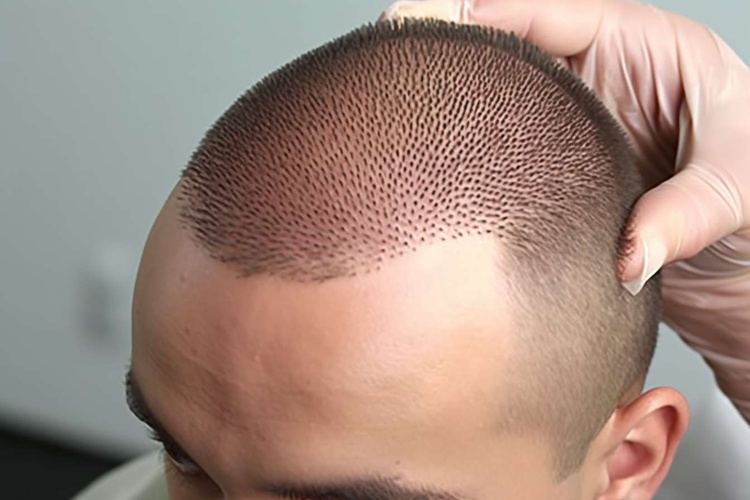Bald No More: The Promise of Hair Transplantation
Hair loss has been a source of anxiety and frustration for millions of people worldwide for centuries. From ancient Egyptian remedies to modern medical breakthroughs, humans have consistently sought ways to combat baldness and thinning hair. In recent decades, hair transplantation has emerged as a promising solution, offering hope to those struggling with hair loss. This surgical procedure involves moving hair follicles from areas of the scalp with abundant growth to regions experiencing thinning or baldness. As techniques have advanced, hair transplantation has become increasingly sophisticated, natural-looking, and accessible to a broader range of individuals. Today, it stands as a testament to human ingenuity in the face of a widespread cosmetic concern, blending cutting-edge medical technology with artistic precision to restore not just hair, but often confidence and self-esteem as well.

The most recent advancement in hair transplantation is Follicular Unit Extraction (FUE). This method involves extracting individual follicular units directly from the scalp, eliminating the need for a strip incision. FUE has gained popularity due to its minimally invasive nature, reduced scarring, and ability to harvest hair from areas beyond the scalp, such as the beard or chest. These evolving techniques have not only improved the aesthetic outcomes but have also made the procedure more comfortable and accessible for patients.
The Science Behind Hair Growth and Loss
Understanding the biology of hair growth is crucial to appreciating the complexities of hair transplantation. Hair growth occurs in cycles, with each follicle going through phases of growth (anagen), regression (catagen), and rest (telogen). Androgenetic alopecia, the most common cause of hair loss, results from a genetic sensitivity to dihydrotestosterone (DHT), a byproduct of testosterone. This sensitivity causes follicles to shrink over time, producing thinner and shorter hairs until they eventually stop growing altogether.
Hair transplantation works by relocating DHT-resistant follicles from the back and sides of the scalp to areas affected by balding. These transplanted follicles retain their genetic resistance to DHT, allowing them to continue growing in their new location. This biological basis explains why transplanted hair can provide a long-lasting solution to hair loss, as opposed to temporary cosmetic fixes.
The Artistic Aspect of Hair Restoration
While the scientific and medical aspects of hair transplantation are crucial, the procedure also requires a significant artistic touch. A successful transplant isn’t just about moving hair follicles; it’s about recreating a natural-looking hairline and distribution pattern. Skilled surgeons must consider factors such as the patient’s facial structure, age, and existing hair characteristics to design a result that looks both aesthetically pleasing and age-appropriate.
The artistic considerations extend to the angle and direction of transplanted hairs, the density of placement, and even the subtle variations in hair thickness and color that occur naturally across the scalp. This blend of medical expertise and artistic vision is what separates truly exceptional results from those that may appear artificial or poorly planned. As the field has advanced, there’s been an increasing emphasis on this artistic aspect, with many top surgeons viewing their work as a form of sculpture or design as much as a medical procedure.
The Psychological Impact of Hair Restoration
The effects of hair transplantation extend far beyond the physical. For many individuals, hair loss can have a profound impact on self-esteem, social confidence, and overall quality of life. Studies have shown that both men and women experiencing hair loss often report feelings of anxiety, depression, and social withdrawal. In this context, hair restoration can be transformative, not just in appearance but in psychological well-being.
Patients often report significant improvements in self-confidence following successful hair transplantation. This boost in self-esteem can have ripple effects, positively impacting personal relationships, professional opportunities, and overall life satisfaction. However, it’s important to note that managing expectations is crucial. While hair transplantation can provide remarkable results, it’s not a cure-all for deeper psychological issues, and patients should approach the procedure with realistic expectations and a healthy mindset.
The Future of Hair Transplantation
As we look to the future, the field of hair transplantation continues to evolve. Emerging technologies and techniques promise even more refined and effective treatments. One area of active research is cell-based therapies, which aim to regenerate hair follicles using stem cells. This approach could potentially provide an unlimited source of hair for transplantation, overcoming the current limitation of donor hair availability.
Another promising avenue is the use of 3D printing technology to create scaffolds that can guide hair follicle growth. This could allow for more precise control over the direction and density of transplanted hair. Additionally, advancements in robotics and artificial intelligence are being integrated into hair transplantation procedures, offering the potential for increased precision and reduced procedure times.
As these technologies develop, we may see a future where hair loss can be addressed even more effectively and with less invasive methods. However, it’s important to approach these developments with cautious optimism, as bringing new technologies from the laboratory to clinical practice often takes considerable time and testing.
In conclusion, hair transplantation represents a remarkable intersection of medical science, technological innovation, and artistic skill. From its humble beginnings to its current sophisticated state, it has offered hope and restored confidence to countless individuals affected by hair loss. As the field continues to advance, it promises to further refine the delicate balance between nature and intervention in the realm of hair restoration. While not a solution for everyone, for many, hair transplantation has indeed turned the tide in the age-old battle against baldness, proving that in many cases, one need not simply accept hair loss as an inevitable fate.




